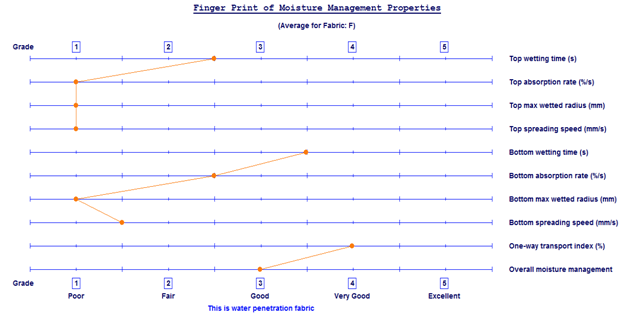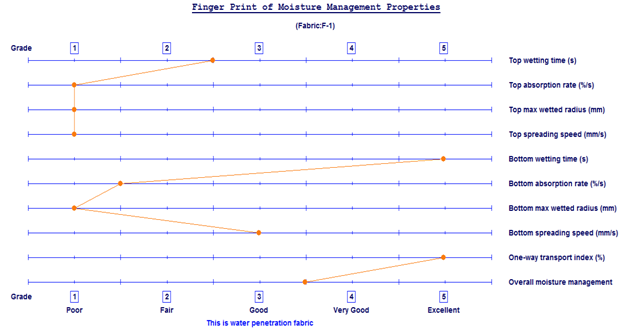Journal of
eISSN: 2574-8114


Research Article Volume 5 Issue 2
1Department of Textile Technology NIT Jalandhar, India
2Department of Textile Technology IIT Delhi, India
3Department of Textile Engineering University of MINHO, Portugal
Correspondence: Kanwar Varinder Pal Singh, Department of Textile Technology, National Institute of Technology, G T Road Bye- Pass, Jalandhar, Punjab, India, Tel 01813082000, Fax 01812690324
Received: February 26, 2018 | Published: March 6, 2019
Citation: Singh KVP, Das A, Fangueiro R. Improving overall moisture content of friction yarn for its use in foundation garments – part 2. J Textile Eng Fashion Technol. 2019;5(2):69-71. DOI: 10.15406/jteft.2019.05.00183
As per the global scenario, physiological comfort is very basic and necessary property of the fabric. The fabrics with higher level of comfort values have a tremendous scope from the point of view of comfort in the garment industry. The comfort has been an inherent feature of the knitted textiles. To further increase the softness in knitted fabric, twistless yarns are used. As compared with that of conventional spun yarns, their strength largely depends on the amount of twist but it has the disadvantage of imparting a harsh feel to the fabric. Once the twistless yarn has been assembled in a fabric structure, the compacting forces created by the fabric structure itself hold the systems together. Hence, it is quite possible to produce a twistless knitted fabric with improved parameters of physiological comfort, which can be beneficial for apparels. An attempt has been made to develop DREF III friction spun yarn after structural modifications with an objective to analyze its feasibility for foundation garment end use by diagnosing its quantified reduction in harshness to develop foundation garments and enhancing its breathability.1 In ‘Overall Moisture Management Content’ of foundation garments; one-way transport index% is considered as the sub-function with maximum importance; as sweat or moisture is supposed to be transported from body to climate keeping its minimum conditions for desirability of comfort and handle as constant and prohibition of outer moisture to travel inside.2–4
Keywords: comfort, handle, overall desirability, overall moisture management content, feel factor
Among the modern high technologies for producing spun yarns, friction spinning has some advantages over the others due to lower production cost. But its main disadvantage is the harsh feel due to the wrapper fibres of the sheath1. In order to increase the comfort-related properties of friction-spun yarn, Merati and Okamura used hollow yarn. They succeeded in getting the enhanced comfort with hollow yarn but they were unable to minimize the harsh feel4 in fabric in this work harsh feel is reduced and comfort properties are enhanced.
‘Physiological Control System’ (PCS) of both comfort & handle is being upgraded to ‘Engineering Control System’ (ECS).5 ‘Ideal fabric’ is identified as per the synergistic target & goal i.e. which satisfies & saddles both the parameters of comfort and handle in a compromise zone.6 Unique resultant value in a compromise zone is known as an ‘Overall Desirability’ is used to develop ‘Feed Forward Back-Propagating Mathematical Model’.7,8
As reported earlier 5 polyester filament fibres was used as a core, viscose staple fibre as a secondary core and PVA (poly vinyl alcohol) as a sheath. DREF-III spinning machine was employed to produce the series of yarns at constant yarn delivery speed of 200m/min and spinning drum speed of 3500rpm.
The prepared plain knitted samples of both optimized modified friction spun yarn and conventional friction spun yarn were tested and compared for analysis with an objective to quantify and optimize the desirability of both comfort and handle in order to achieve the overall desirability of an ideal fabric to achieve value added garment.9
To fulfill the objectives of the study, the methodology is planned out in the following manner:
Simulated and developed products with frugal engineering
Optimized yarn: Optimized yarn is a unique modified friction spun yarn, whose physiological comfort related responses are simultaneously optimized to avoid clamminess in summer.
Ideal fabric: It is a garment prepared with ‘Ideal Fabric’. ‘Ideal Fabric’ can be defined as a fabric which satisfies all the parameters or responses of both comfort and handle simultaneously required for the specific end- use as per the desirability and concurrent engineering. ‘Ideal Fabric’ keeps on changing due to fabric properties required for specific end-use as per its functionality.
After the prediction of values of considered factors and responses, an optimized yarn is developed with maximum desirability value, is converted into a knitted fabric and garment. Objective evaluation of the above mentioned responses of physiological comfort fabric handle as per the functional requirement of the apparel and its simultaneous objective optimization to achieve a unique resultant value in a compromise zone known as the overall desirability of an ‘Ideal Fabric’. Optimized value of each response of comfort and handle may be treated as ‘Primary Hand Value’ (PHV). The desirability of both comfort and handle may be treated as ‘Total Hand Value’ (THV).
Further simultaneous optimization of desirability of both comfort and handle will provide a unique resultant value in a compromise zone known as an ‘Overall Desirability’ co-relating both comfort and handle with concurrent engineering. ‘Total Hand Value’ (THV) considers only handle properties; FAST system only provides finger prints but unable to provide any unique value however ‘Overall Desirability’ (Do) considers both the parameters of comfort and handle
Reference fabric: It is a knitted fabric made from the 70:30 conventional friction spun yarns.
Evaluation of Overall Desirability of ‘Ideal Fabric’:
As, overall desirability of ‘Ideal Fabric’ is;
Do= (DC. DH)1/2
DC = 0.577 (desirability of comfort)
DH = 0.570 (desirability of handle)
Therefore, overall desirability
Do = (0.577 x 0.570)1/2
= (0.32889)1/2
= 0.5734
If the overall desirability of fabric will be 0.5734 then we will be able to achieve the value added garment from a desired fabric known as an ‘Ideal fabric’.
Evaluation of feel factor
Feel factor of Reference fabric: (70: 30 conventional friction spun yarn i.e. Reference fabric)
Feel factor of reference fabric is evaluated as per values derived from the graph generated by ‘Fabric Feel Tester’ shown in Figure 1.

Figure 1 Finger prints of OMMC of ‘Reference Fabric’ grading ‘One-way transport index %’ as ‘Very Good'.
Feel factor (f) = 26.58+ 20.65*2.777 – 0.436 * 0.626 – 0.131* 0 + 5.064 * 3.017 -0.361 * 43.094
Feel factor (f) = 83.23
As the feel factor increases, harshness increases.
Feel factor of Ideal fabric: (Optimized friction spun yarn i.e. Ideal fabric)
Feel Factor of Ideal fabric is evaluated as per values derived from the graph generated by ‘Fabric Feel Tester’ shown in Figure 2.

Figure 2 Finger prints of OMMC of ‘Ideal Fabric’ grading ‘One-way transport index %’ as an ‘Excellent’.
Feel Factor (f) = 26.58+20.65*1.989 – 0.436 * 0.443 – 0.131* 0 + 5.064 * 3.017 -0.361 * 49.156
Feel Factor (f) = 64.9
As the feel factor decreases harshness decreases i.e. increase in softness.
Diagnostic case study
By comparing the feel factor of both the samples percentage reduction in harshness is being calculated i.e. Reduction in harshness=(Feel Factor of ‘Reference fabric’)-(Feel Factor of ‘Ideal fabric’) ((83.23-64.9)÷83.23) *100= 21.91%.
So, after structural modifications of friction spun yarn with an objective to analyze its feasibility for apparel end use, its quantified reduction in harshness is being diagnosed i.e. we are able to reduce 21.91% harshness of friction spun yarn. Similarly, improvement in OMMC and air permeability is being calculated.
As ‘Overall Desirability’ (Do) considers both the parameters of comfort and handle9 so diagnostic and antagonistic case study is being done by comparing and quantifying the ‘Feel Factor’10 and ‘One-way transport index%’ of ‘Ideal fabric’ with ‘Reference fabric’ and quantifying its reduction in harshness and air permeability assuming body metabolism and microclimate as constant and stationary respectively.
This work led to the 28.2% reduction in harshness;15.7 % improvement in OMMC (overall moisture management content) causing 52.58% & 55% improvement in one-way transport index & air permeability respectively. Ultimately the objective of enhancing breathability of designed and developed product is being achieved.
Author declares there is no conflict of interest in publishing the article.

©2019 Singh, et al. This is an open access article distributed under the terms of the, which permits unrestricted use, distribution, and build upon your work non-commercially.